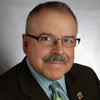
The majority of Latinos in the United States share an indigenous root and legacy, many more than one. As a Chicano, I was taught about the Aztec and Mayan Empires, and the widespread and diverse presence of other indigenous peoples of Mexico. I have been fortunate to visit Mexican pyramids and ruins, and the encyclopedic National Museum of Anthropology in Mexico City. Farther afield, I have been blessed to visit historic Cuzco and breathtaking Machu Picchu, remaining centers of the vast and powerful Incan Empire.
This is all great, but what about the indigenous civilizations in the middle? If you're lucky, maybe you've heard of the Kuna, and even visited the Panamanian islands of San Blas. Maybe you've seen a piece of contemporary Honduran Lencan pottery, probably in a gift shop. Maybe you know something of the struggles of the Miskito peoples of Nicaragua or, more harrowing, of the brutal genocide visited upon Mayan villages in the Guatemalan highlands.
If you're like me, and you're honest with yourself, you probably know painfully little about the pre-Hispanic civilizations and legacies of Central America. There are a lot of reasons for this, but that's the subject of another column. For now, suffice it to say that Central America has historically received little attention except for responding to the exploits of the United Fruit Company, the building of the Panama Canal, the rise of Sandinista and Farabundo Martí movements and governments, the Contra scandal, the devastating civil wars of the 1980s and resulting diaspora to this country and the emergence of menacing street gangs.
What peoples did the Spaniards "encounter" in this region? What were their names? What do we know about their social organization, agricultural practices and foodways, arts, spiritual practices and relationships with the natural environment? Finally, and sadly, what do we know about the consequences of devastating colonial degradation, code word for imposing European disease, military operations, forced religious conversion and environmental damage?
The mission of the Smithsonian Institution is the increase and diffusion of knowledge. With pride, I can say that its Museum of the American Indian and Latino Center have hit the targeted mission with the recent opening of Cerámica de Los Ancestros: Central America's Past Revealed, a pioneering exhibition illuminating Central America's vibrant past, currently on view at the American Indian museum on the National Mall. The exhibition will be up through February 1, 2015.
Connecting with the Central American community, the largest immigrant group in the D.C. region, is a task to which we now turn our focus. Salvadorans, Guatemalans and Hondurans are three of the ten largest Latino populations in this country, but many Central Americans will not be able to travel to the National Mall to see the show, so we are devising strategies to engage them via the Internet. Outreach and engagement is the task at hand.
This week, I ran into my good friend Roland Roebuck, a Puerto Rican rock in the D.C. Latino community. Of the Cerámica exhibition, he said, "Bro, you've done four important things for the Central American community. You've removed the cloak of invisibility, you've advanced regional cohesion, you've engendered self-esteem and you're educating folk so that they see the Central Americans from a new and different perspective." It's great to be acknowledged for your work, but the real thanks goes to the communities whose legacies we have been fortunate to study and honored to present in one of this country's most important and prestigious national museums.
The Cerámica exhibition includes a short video with young Salvadoran and Costa Rican anthropologists and archeologists talking about the importance of studying and preserving their indigenous inheritance. "We have to get people to understand that heritage is not something only of the past or that that it should stay in the past, but that is part of us, that it forms part of who we are." True words spoken by Costa Rican archeology student Andrea Sales, and a succinct gauntlet to those of us working in the diffusion of knowledge business.
